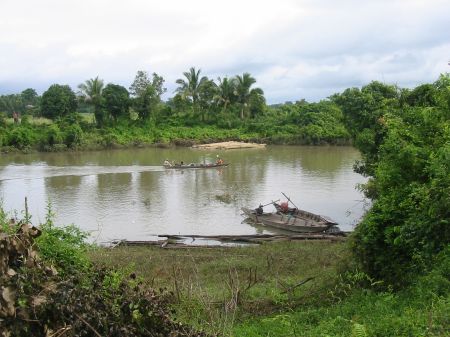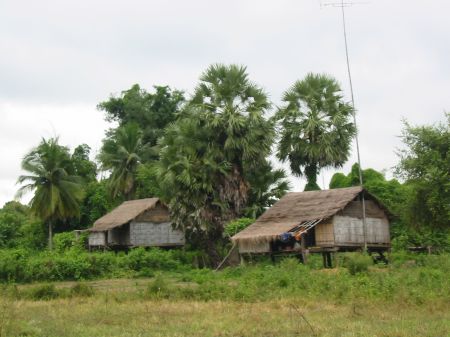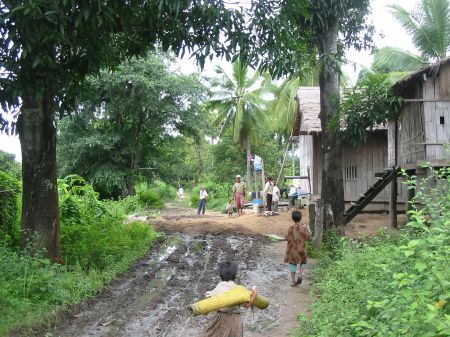Today is Saturday. As usual we do not care much about the weekend and intend to visit another indigenous village. So after we had breakfast we take a taxi and travel about half an hour north to meet the Chairman of the associated Commune Council.
We meet this guy and than drive together another thirty minutes before we reach the place where we take a boat.
This is on the way.



From here we take a boat. Unfortunately, this village is accessible only by boat.

Behind the bridge is the Mekong River.

This is on the boat.



There is not much traffic on the river and not much going on at the banks either.


This is Reaksa with the Councilor.



After about 40 minutes we reach the village, which is inhabited by Phnong people.
This is one of the huts which are hold in high regards by various groups of indigenous peoples for reasons that I did not yet entirely understand.

In the village.

People here did not know that we would come. So it takes some time to find and inform people. However, people are very willing to participate and after maybe 30 minutes we sit together in this hut and have an interview.
I should mention that this is one of the poorest villages I have seen. There is a girl of about 8 years laying in the background who has 41 degree fever. We talk to her mother and learn that she had ten children. Five of them died, one of them last month. She and her husband borrowed a lot of money to pay for medicine that did not work out. Now her husband went to the mountains to cut bamboo which he can sell in the market to pay back the borrowed money. He is away for about one month now and does not know both that his other child died and that the next one is sick. He took the families only mosquito net.
We have an interesting discussion which lasts about three hours. This is after our meeting.


We talk to this mother and the Councilor and decide to take her with us to the hospital in Kratie. I should mention that health services are usually not accessible for those people since they cannot afford both the transportation by boat and car and the treatment in the hospital. The councilor mentioned that needy people can visit him in his office to get a letter which tells the hospital to treat the person without charge. However, few people get such a letter since the office of the Commune Council is far away and since even with a letter treatment is expensive.
The woman to the left is the mother of the sick girl, which is the one with the mat in her hands left to the women.

For some reasons baby chicken are painted in various colors.

This is the center of this village.

On the boat again.

This is how bamboo is transported from the mountains. Sticks are bound together and a boat pulls those bundles down the river. The price for those bamboo sticks increases the closer it comes to the capital. At this point the price is about 120 Riel (3 Cent). In Kratie the price is about 200 Riel (5 Cent).


Going back to Kratie involves some time, since we are more people than can fit in the car. First we go to the office of the Commune Council to get a letter or recommendation for the hospital. Than we go all the way to Kratie with the mother and two of her children. In the hospital it takes us some time (and despite the letter quite some money) to make sure the child is treated.
On the way I took this picture of the CPP provincial headquarter.

Later we meet with two people from an international NGO at the riverside. We had an interview with the lady which was not so much about indigenous peoples yet fairly interesting. The other guy is researching on projects to reduce the density of the sort of mosquito that causes dengue fever. He is from I forgot which European country. Of course both of them spoke English which gave me the rare opportunity to talk to people directly.
